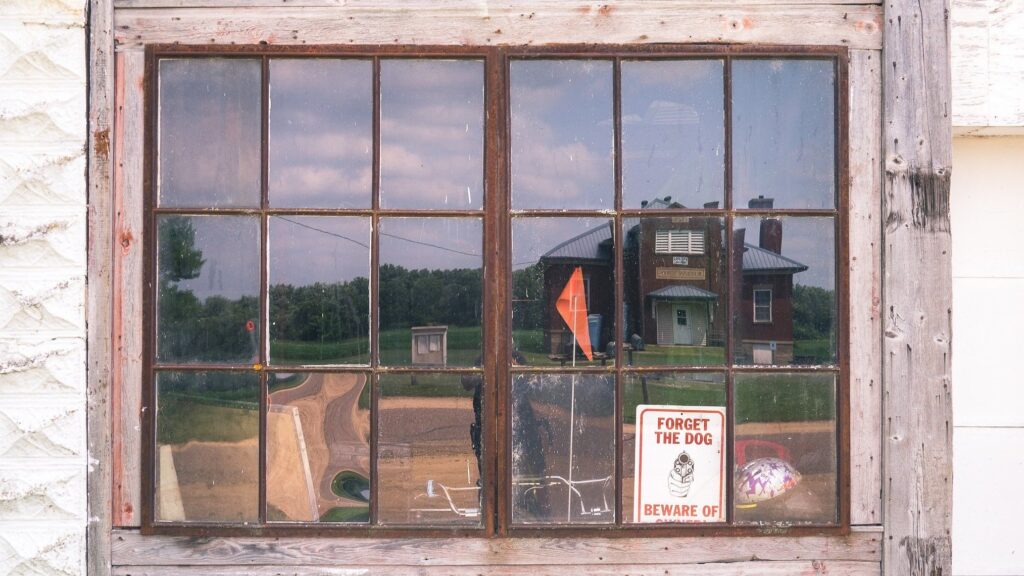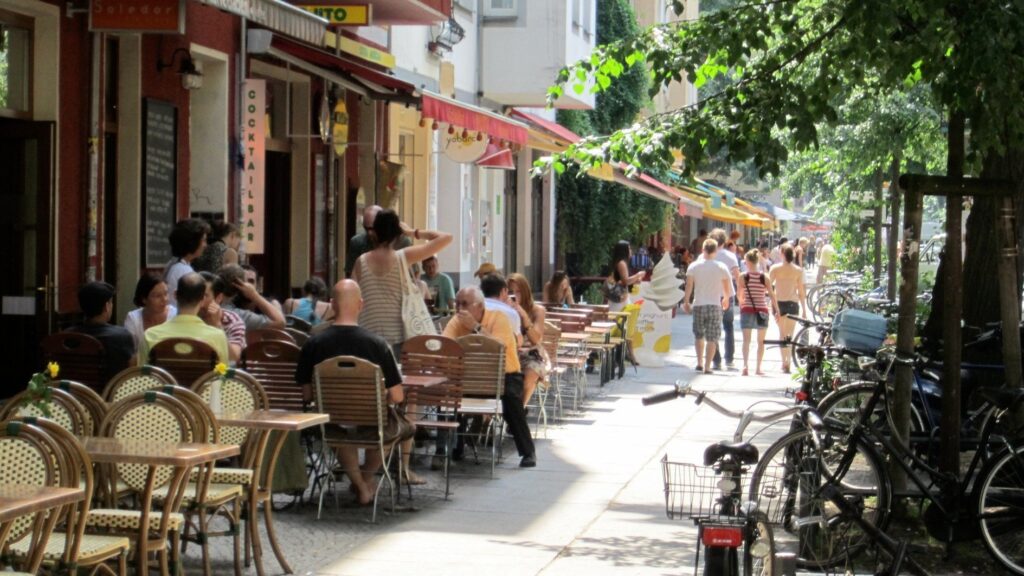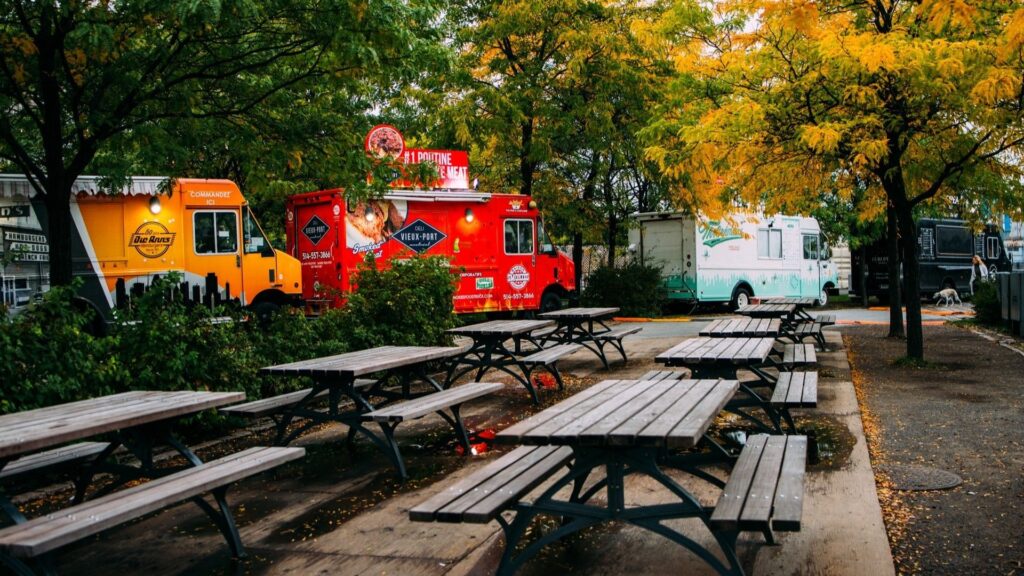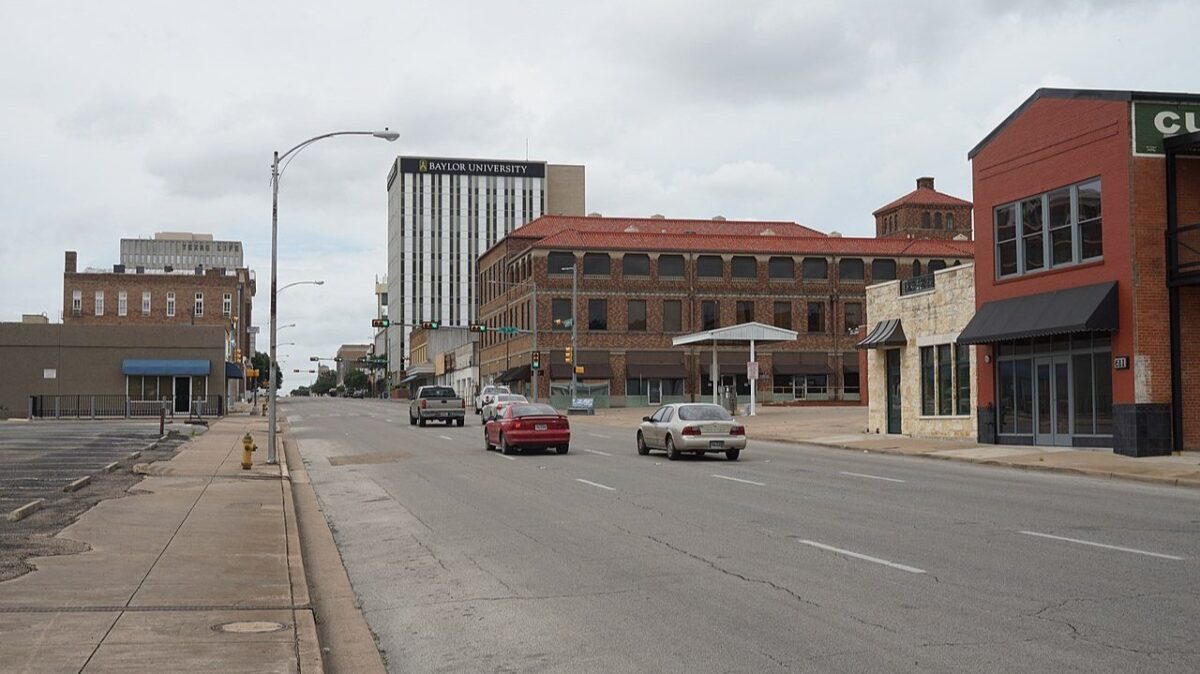A few weeks ago, my boyfriend Rob and I were driving back after a long hike in Waco’s beautiful Cameron Park when we spotted a locally owned baked-goods truck a few blocks from my house. After living in this neighborhood for almost a year, I decided it was time to try their gluten-free bacon jalapeno scones and Rob agreed.
I live in a formerly historic neighborhood in Waco that’s straddling its past and its future. Like many American neighborhoods, Waco’s inner neighborhoods struggled with poverty and crime amidst the rise of suburbia. The residents who remained (many of them connected to various churches and nonprofits) anchored the neighborhood. Today, we’re in the midst of seeing their faithfulness pay off as the neighborhood shows signs of revitalization.
But it’s still a work in progress and the signs of neglect are obvious. Many of the houses in my neighborhood need repair. Most are guarded by fierce dogs and tall wire fences. Behind those fences, the grass in many yards is overgrown and littered with trash. There are no flowers, no children playing, and no neighbors chatting outside. At night, the poorly lit streets become the playground of the city’s notorious drag racers.
Coming from Brooklyn, it’s been a struggle for me adjusting to life without density, walkability, and vibrant street life. But, on the bright side, I am fortunate to live in a gorgeous historic home owned by a family from my church that puts me within biking and walking distance from church and downtown. I’ve gotten to know many neighbors and, with a revitalizing neighborhood association, it seems the neighborhood has potential for a true comeback.
I try to find ways to enjoy the little pockets of human-centric design I find in Waco, such as this food truck. As we circle the neighborhood looking for parking, I manage to keep down my usual grumbling about its decline (a bad habit I’m trying to break), but then I see it. It’s a warning sign attached to a wire fence, guarding a house. The type reads: “Ignore dog, beware owner” and it’s followed by an image of a gun barrel loaded with six bullets.
I lose it, bursting into tears as my boyfriend turns a corner and parks.

Let me put this out there now: I am not offended by people having guns. This was about much more than that. It was about wanting to feel welcome in my neighborhood.
Growing up, my family moved often, which meant I rarely felt like I belonged within a specific community… I loved many cities but never really had one place that felt like home. Over the years, I’ve learned to respond to that void by practicing hospitality, by finding ways to make other people feel welcomed and at home.
So, in that despondent moment in my Waco neighborhood, it dawned on me that hospitality is the value that felt most violated, not just by the sign, but by design and function of most North American cities, where the built environment makes cars more visible than people.
It’s no secret that design plays an important role in shaping how we relate to other people. The way a space is designed shapes our social behaviors more than we may know. For example, a restaurant designed to move people quickly in and out of the door will choose different design features than a restaurant designed for long, private conversations or one designed for joyful, communal dining.
It’s the same for cities. While urban design can’t force people to interact, it can facilitate opportunities for spontaneous connection and a participatory frame of mind from which we derive a sense of connection.
I have been fortunate to experience many different kinds of cities from Memphis to San Diego, Tulsa and Nebraska. I was also lucky to spend time in global urban centers like New York City and other places in Europe. Looking back at my more urban seasons of life, I realize this explains why I felt connected to those cities, even though it was hard to build a community of proximity. Put simply, the walkable design of those cities made people visible and in doing so, made me feel like I was part of something bigger than myself. By seeing people all the time, I felt connected to the city and to all the strangers bustling around me.
The power of visibility should not be overrated. Cities where humans see and interact primarily with other humans (rather than cars or “smart” technologies) are providing an essential precondition for people to feel less isolated. Visibility also reminds us of our interdependence and of the collaboration necessary for us to flourish as a society. And lastly, human-centered places are those where the structure, aesthetics, and layout of the city align with what humans need most in built environments: aesthetic beauty and order, diversity, and safety.

Cumulatively, these human-centric design decisions work together to create a place that’s inviting to people who are not in cars. It’s easier to establish connections with each other. But the opposite is also possible: Cities can adopt design priorities that have the opposite effect…and this is why I found myself crying in a Waco neighborhood.
That sign on the fence might be just a silly sign in the style of some Texas humor, but it amplified something I had been feeling ever since moving to Waco. I couldn’t name it at the start, but looking back I realize the things I had been lamenting the most over the past sixteen months were design decisions or attributes that have cloaked the city in an unintended air of hostility.
First, there are the various highways that cut through the city; including I-35, which borders various neighborhoods with cement walls, effectively turning those areas into dead zones. There are the trees sliced and slashed for utility lines, a lack of code enforcement lets trash accumulate in yards and poor, auto-centric, wide street design that facilitates high-speed racing through neighborhoods with children.
Then there are the stroads and abundant parking lots that coexist alongside unconnected bike lanes and truncated, broken sidewalks. Downtown is full of parked cars, but the public square remains empty of people. Within the neighborhoods, the abundance of gates, fences, and aggressive dogs create a perhaps unintended, but visceral sense that I am an intruder wherever I go.
I know Waco strives hard to be welcoming. I know Waco is home to many kindhearted people. I know that many people living in those fenced-in homes and driving those fast-moving cars are friendly, hospitable people. Many are my friends and neighbors. I see many of them hanging out at the Farmer’s Market on Saturdays where I work a few weekends a month. I see them at cafés chatting with each other, I see them at church.
Our cities didn’t become inhospitable because someone intentionally set out to make life miserable for everyone not driving a car. They became this way because people with power during the mid-20th century made decisions around a certain set of values—privacy, convenience, speed, and profit—and then baked those values into the design, governing, and financing structures of our cities. Fast-forward seventy or so years and our cities have become paradoxical places: full of hospitable people, yet hostile by design.
Building thriving cities requires thinking about this paradox and asking ourselves what it would take for our private hospitality to be expressed more visibly. What would a hospitable approach to land-use, transit planning, and infrastructure look like? What kinds of places would we create if our goal was to be inviting and welcoming? What kind of design policies would encourage the development of social ties and the emergence of a neighborly culture?

When I eventually calmed down, Rob gently reminded me that I live in Texas, that perhaps the gun imagery was a type of light humor or maybe that it stemmed out of a negative experience of being robbed. I nodded, realizing his points, got out of the car and walked up to the food truck window to order. Turning around, I was relieved to see someone understood the power of making people visible, putting us close to each other. Part of the lot had been transformed into an outdoor café that came right up to the sidewalk. We found seats amidst the small collection of chatty neighbors and for a brief moment, everything felt okay.
It’s depressing to realize that most North American cities are trapped in 1950s design with its highways, stroads, single-use zoning, over-abundant car infrastructure, and withering civic culture. Seventy years of the Suburban Experiment have taught us that our design choices are powerful: through design, we can either push people closer together or further apart.
There’s a bright side, though: Inhospitable cities are largely a design problem, which means there can be a design solution. Creating such places will require more than new building codes. It will require a re-evaluation of our values and a re-evaluation of how we answer the question of what is necessary for us to live a good life alongside each other. Of course we can’t require people to give up their fences, growling dogs, and unfriendly warning signs, but we can make decisions differently when it comes to land use, zoning, and transit infrastructure. And maybe if we start to put people at the center of our cities and neighborhoods, then fences, dogs, and aggressive warning signs will be less necessary. Maybe, one design choice at a time, we can create built environments that nudge us towards conviviality.
